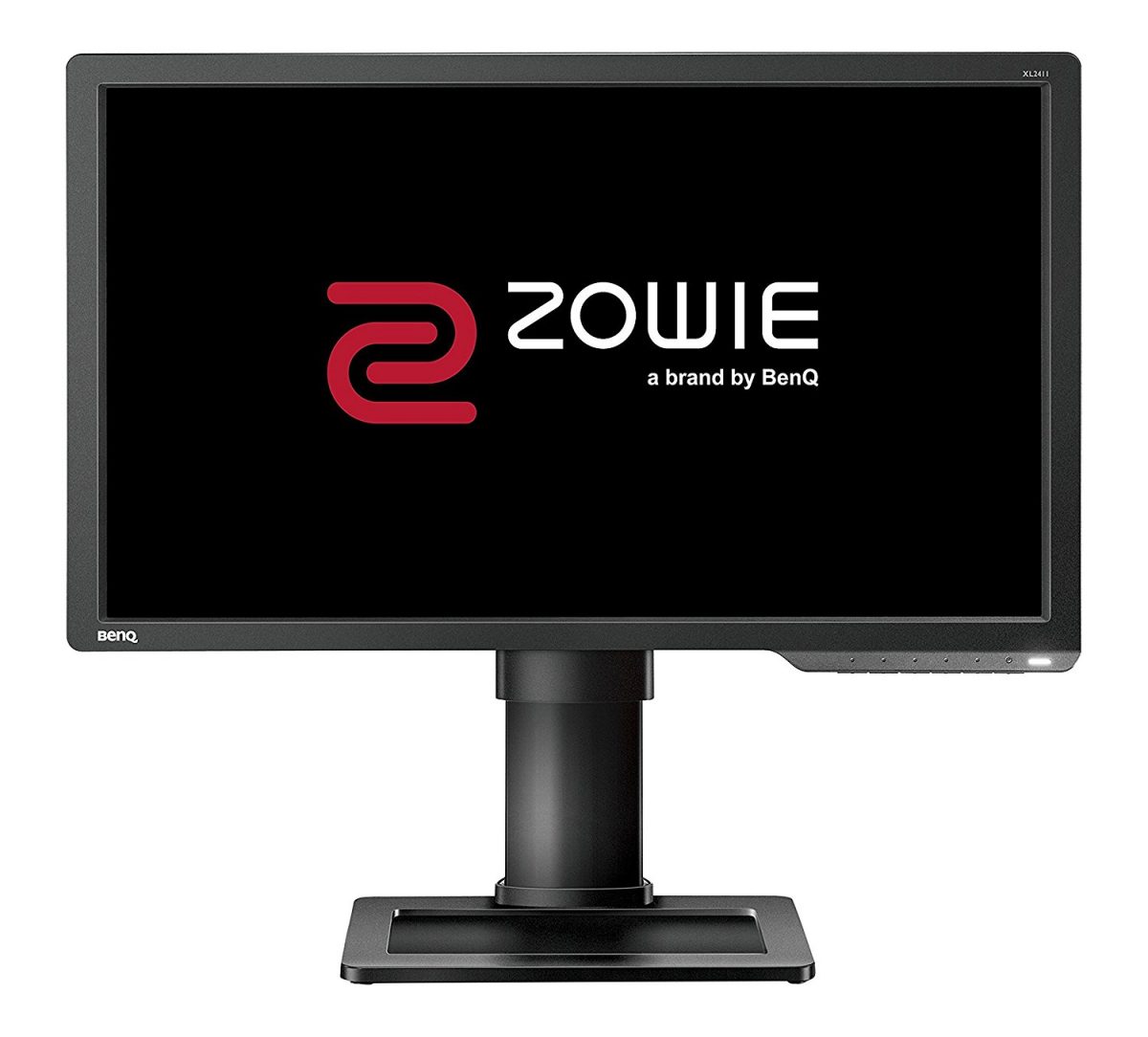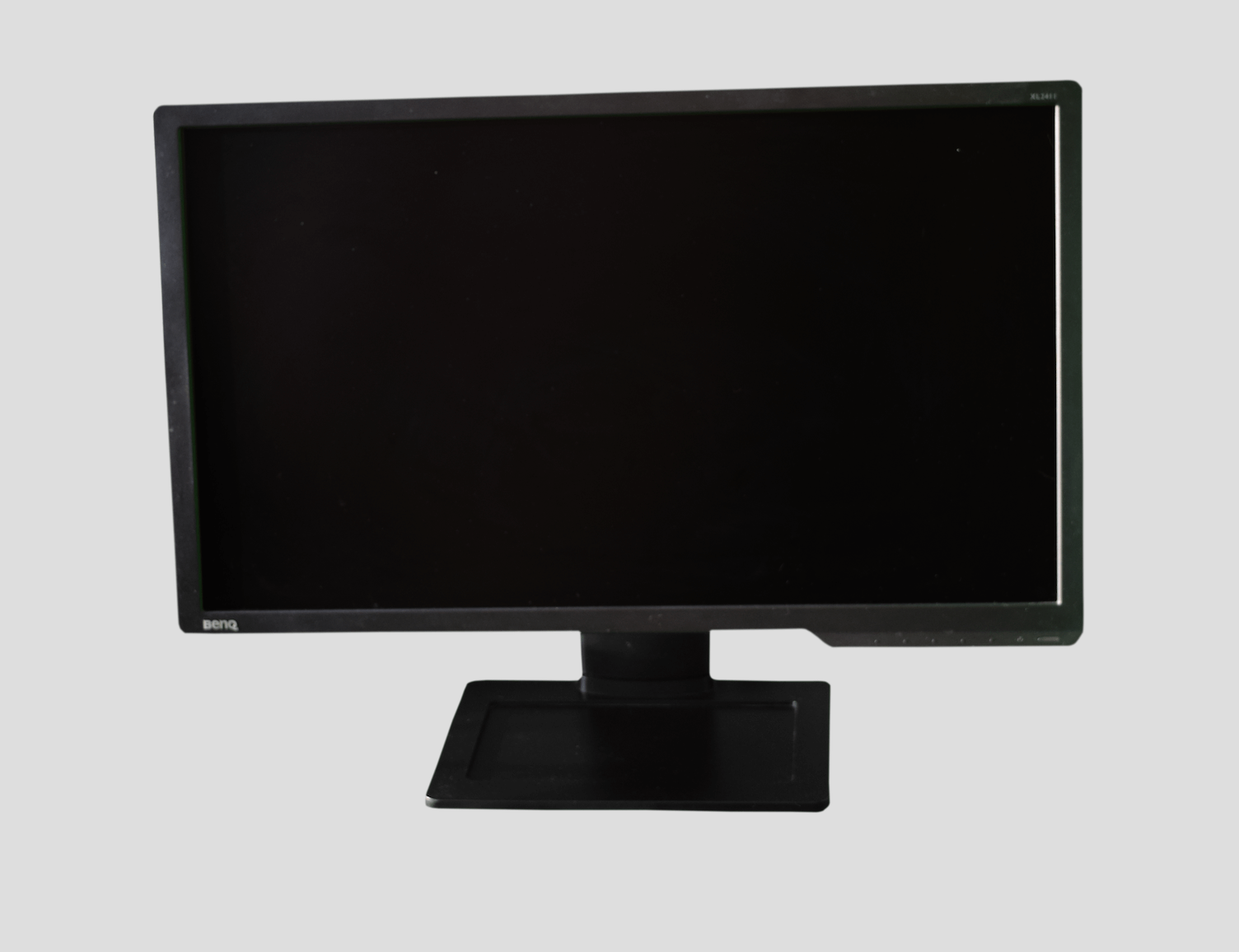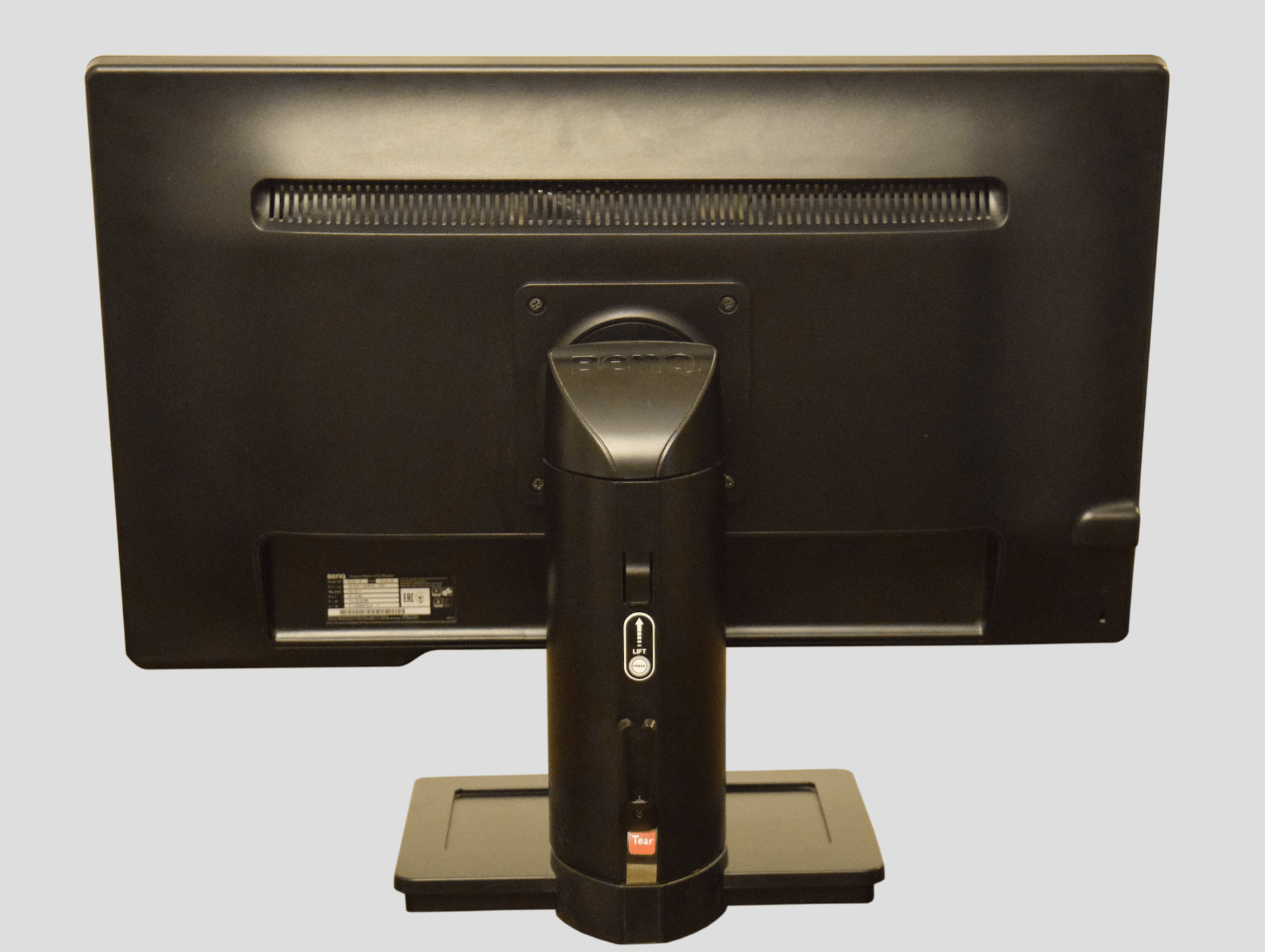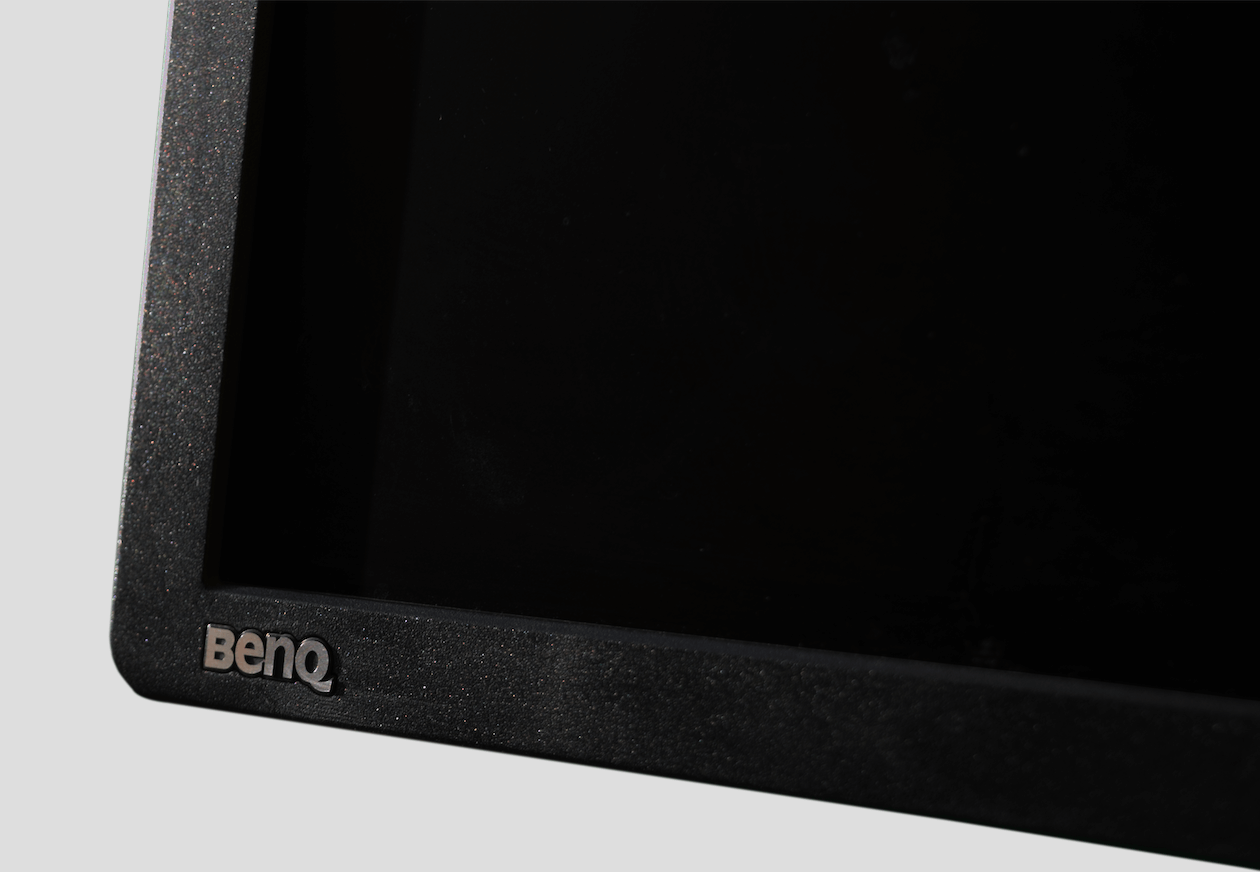BenQ XL2411 *Long-Term* Review – Best Professional Gaming Monitor of 2018?
Introduction
With the rise of eSports more and more PC gamers are looking into improving their performance without breaking the bank, and one of the most noticeable upgrades in the last few years has been the purchase of a high refresh rate monitor. The benefits of a 144 Hz – or more! – monitor are multiple, starting from the increased smoothness, lower input lag and less motion blur. There’s plenty of options on the market, ranging from entry level monitors around $200 all the way to over $1000.
BenQ has been a pioneer and industry leader in the monitor scene for years now, and in 2015 they acquired Zowie, a company renowned for their gaming peripherals. After the deal was sealed BenQ began rebranding some of their more gaming oriented monitors with the Zowie logo on the box and a particular focus on the eSports community.
Today we’re going to take a look at the Zowie XL2411, the successor to the BenQ XL2411Z, to see if this is the budget 144 Hz monitor to get.
Specifications
| Display | Electricity | ||
| LCD size (inch) | 24 | Power supply (90~264 AC) | Built-in |
| Aspect ratio | 16:9 | Power consumption (On mode) | 45W |
| Max. resolution | 1920 x 1080 at 144Hz (DVI-DL) | Size & Weight | |
| Display area (mm) | 531.36 x 298.89 | Dimensions (HxWxD mm) | 431 x 570 x 222 |
| Pixel pitch (mm) | 0.276 | Net weight (kg) | 5.9 |
| Typ. brightness (cd/m²) | 350 | Gross weight (kg) | 8.4 |
| Typ. contrast | 1000:1 | Stand | |
| Typ. DCR (Dynamic Contrast Ratio) | 12M:1 | VESA wall mounting | Yes, 100×100 mm |
| Panel type | TN | Pivot (°) | 90 |
| Response time | 1ms (GtG) | Swivel (left/right °) | 45/45 |
| Connectivity | Tilt (°) | -5~20 | |
| Input | D-sub + DVI-DL + HDMIx1 | Height adjustment (mm) | 130 |
| Output | headphone jack | Special Features | Low Blue Light, Blur Reduction |
Design
The monitor sports fully black, thick bezels and a sturdy stand. Its design is actually fairly unique; you may think there’s only so much you can change about the look of a monitor, but the XL2411 stands out because of its off center chin that houses the OSD buttons and the status LED. There are no built in speakers, so you’re gonna need to provide your own or use headphones.
The monitor is VESA compatible with 100 mm spacing, so if you want to use an alternative mounting solution, feel free to do so. The provided stand is however pretty good, with support for 130 mm of height adjustment, 25 degrees tilt, 90 degrees tilt and rotation, allowing you to use the monitor in portrait mode, if you desire to do so. Assembling the monitor and the stand is fairly simple, since all you have to do is insert the ‘neck’, which comes attached to the back of the monitor, into the base of the stand. Get a screwdriver and tighten the screw under the base and you’re good to go. Once assembled the monitor is really stable, thanks to the wide metal plate that is the base, and it won’t wobble or move at all. The build quality is great, with good plastic and a matte finish, but as this is an entry level model the fancy features we see on high end monitors are missing.
OSD
To navigate through the screen menus there are five buttons at the bottom of the chin, plus the power button. Pressing any of the buttons lets you access the screen menu. The first three buttons can be customized to quickly access most of the settings, so if you need to adjust the brightness or change input on the fly you can do it with only a couple of key presses. The main menu of the monitor has six submenus that allow you to fine tune the monitor to your needs. There are plenty of settings and features you can adjust in the OSD, ranging from contrast ratio to a low blue light filter and of course individual RGB color levels to calibrate the panel. Once you customize the settings to your taste you can save everything as a preset, with three slots available in case you have different use cases or maybe need different brightness and contrast levels when you take your computer to LANs.
Inputs
The monitor has multiple inputs in case you want to plug in something like a gaming console together with your PC. HDMI 1.4b, D-Sub (VGA) and DVI-D Dual Link are featured on the back of the monitor, with a 3.5 mm jack available on the left bezel to connect your headphones for passthrough audio through HDMI. Unfortunately a DisplayPort interface is lacking, and the HDMI port is only capable of 1080p at 60 Hz, leaving DVI as the only input capable of 1080p at 144 Hz. The monitor does come with a Dual Link DVI cable in the box, but as tech moves forward finding a graphics card with DVI output will get harder, as both AMD and Nvidia already disclosed they plan to remove the DVI connector from their discrete graphics cards. If you plan to keep this monitor for a long time be aware you may have to buy an adapter down the road.
Panel
The XL2411 sports a 24” TN panel made by AU Optronics. The monitor can display 16.7 million colors through it’s 6 bits + FRC panel. This is not as good as a native 8 bits panel, but the difference is hardly noticeable, especially in the heat of a gaming session, and the benefit is faster pixel response time. The panel features an anti-glare coat, which helps prevent reflections but affects picture quality negatively. Fortunately the coat is not as heavy as seen in other monitors, so the result is more than acceptable giving a good balance between a clear picture and a very reflective screen. As for the backlight, the monitor features an array of white LEDs and it’s flicker-free at all brightness levels, which is great news because PWM ruins motion clarity and can cause medical complications such as eyestrain and headaches in sensitive users. The screen is lit evenly and there’s no noticeable backlight bleeding, though as this changes between samples your mileage may vary.
Since the monitor uses a TN panel viewing angles are not the greatest. The color shift is noticeable if you look at the monitor from the sides, but it’s acceptable and a huge step forward compared to old gen TN panels. The biggest problem however is looking at the monitor from different eye levels. The color shift in this case is huge, and the monitor is not useable past 40 degrees up or down.
Performance
Once you fire up the monitor you will be greeted with Zowie’s logo, and shortly after by the not so great – to say the least – default preset. The brightness is set to a dazzling 250 cd/m², and the colors are particularly inaccurate and washed out – even for a TN panel. Luckily better picture quality can easily be achieved by switching to a different profile, since the default FPS1 leaves a lot to be desired. Once the screen settings have been adjusted – I provide my recommended settings below – the monitor is much more enjoyable to use. The colors are acceptable for a gaming oriented screen, and with a custom ICC profile they’re actually great! I use a calibrated 8 bit IPS monitor as my secondary screen, and while the difference is clearly noticeable the BenQ doesn’t look as bad as other TN monitors. The contrast is also good enough, even if perfect blacks are not possible on this kind of panels. But enough with the color accuracy, let’s get down to business. Does the 144 Hz refresh rate improve gameplay? Yes, yes it does, and once you experience the smoothness of a high refresh monitor, even 60 Hz will looking choppy in comparison. Playing Counter Strike: Global Offensive the lower input lag helps you hit the shots that count earlier, and the increased smoothness makes it easy to track the opponents. Camera movement is clearer because of the reduced motion blur with no noticeable crosstalk, and everything feels much more responsive. If you’ve been into PC gaming for a long time you may remember with fondness how good CRT screens performed on fast paced games with their non existent input lag and motion blur, and the XL2411 will make you feel back at home.
My recommended user settings:
| Picture | |
| Brightness | 100 |
| Contrast | 50 |
| Low Blue Light | 0 |
| Blur Reduction | ON |
| Color Temperature | User Mode |
| R | 95 |
| G | 92 |
| B | 100 |
| AMA | High |
| Instant Mode | On |
| Sharpness | 5 |
| Gamma | Gamma 5 |
Blur Reduction
But what if you want more? The monitor on its default settings is definitely a step in the right direction, but motion blur is still present. The answer to that question comes with a little toggle in the picture submenu called ‘Blur Reduction’. Blur Reduction is BenQ’s name for a feature that was born as a hack when the first high refresh monitors came to the market 5 years ago. These monitors were compatible with active 3D glasses for games and movies, and to reduce the crosstalk and blur caused by the technology Nvidia came up with ‘Lightboost’, which is a fancy name for a strobed backlight in sync with the monitor refresh rate. A small application was then put together to enable Lightboost even when the monitor was set to 2D mode, and lo and behold! For the first time in a decade you could run the bleeding edge technology on a flat panel without regretting the good old tube monitors motion clarity. After manufacturers acknowledged how important this feature was for competitive players they started featuring it in their gaming panels, and nowadays it’s something that’s present in the majority of the high refresh monitors under different names. The concept is fairly simple, but not all monitors perform the same when the backlight is strobed, and you will be pleased to know that the ZOWIE XL2411 is one of the best in this regard. Thanks to various firmware improvements by BenQ you will be able to adjust the strobe time and length to your needs through the service menu, balancing how bright the screen gets and the clarity of movement. A short strobe length gives a clearer picture, but also lowers the brightness. Even with the longest strobe time however you will be able to enjoy a much clearer picture and the eye tracking motion blur will be reduced to CRT levels. If what you’re interested in a monitor is great motion clarity look no further, because BenQ did an amazing job with the XL2411.
Conclusions
BenQ’s ZOWIE 2411 has its strong points and its weaknesses, like every other monitor. If what you’re looking for is breathtaking color accuracy and perfect blacks, I’m afraid this is not the monitor for you. If on the other hand you’re in the market for an entry level high refresh monitor, you can stop your research because you won’t find a better performer under $300. The stand is solid and the backside has everything you need beside a DisplayPort input. The OSD is easy to navigate and offers plenty of features, and the flicker-free 144 Hz panel looks good once tweaked properly. Blur Reduction is one of the best, if not the absolute best implementation of backlight strobing I’ve seen in off the shelves products, and a must if you’re looking to get rid of all the motion blur caused by the LED array. The folks at BenQ achieved their goal to improve players performance while keeping the cost in check, and no matter your skill level I can recommend the XL2411 as a great purchase.
|
||||||||

















